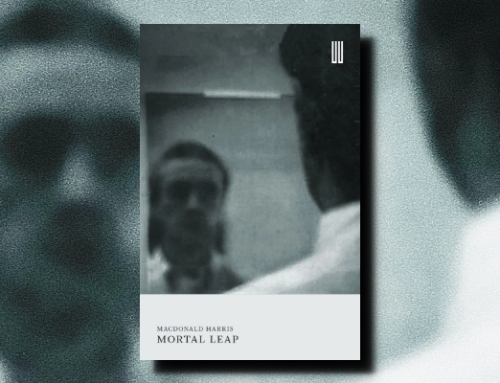The Cat's Table by Michael Ondaatje (2011) Knopf (2011) 269 pp
I’ve never really gotten into Michael Ondaatje, partially because I’ve never really given him a chance. Several years ago I started The English Patient, but I gave up after about 100 pages. Though I feel it must be the case, no one has ever tried to convince me I’m missing out on much. Earlier this year, however, I read and enjoyed an excerpt from The Cat’s Table in The New Yorker (my thoughts on the excerpt here). It was unique, somehow both rambling and direct, intense and placid. It had the best elements of a story where the narrator is enjoying the telling for the sake of the telling, because someone is listening. I wasn’t sure I’d like a whole book that went that way, though, so I’m not sure I would have read the novel had it not been chosen as a finalist for the Giller Prize. But what a great experience I had reading this book! It was even more enjoyable than the excerpt led me to expect.

I’m not at all a fan of the U.S. cover of the book, which to me looks like something thrown together for an early galley. That said, the cover says one thing well: a boat features prominently in The Cat’s Table; perhaps the grainy black and white picture also gives a sense of the time, which is the early 1950s. When the book begins, we meet an eleven-year-old boy on his way to the docks in Colombo, Ceylon (present day Sri Lanka). He’s about to get on a boat that will take him to England to be with his mother. I love the first few lines, so well do they show a bit of numbness, a bit of shock, a bit of dislocation, as the boy travels in a car with “two adults.”
He wasn’t talking. He was looking from the window of the car all the way. Two adults in the front seat spoke quietly under their breath. He could have listened if he wanted to, but he didn’t.
He will, after all, be making this journey by himself, leaving behind all he has known until then. We follow him as he gets to the dock and sees what looks like a city floating in the water. This is the Oronsay, “the first and only ship of his life.” He finds his cabin and settles down:
He did not go back up on deck for a last look, or to wave at his relatives who had brought him to the harbour. He could hear singing and imagined the slow and then eager parting of families taking place in the thrilling night air. I do not know, even now, why he chose this solitude. Had whoever brought him onto the Oronsay already left? In films people tear themselves away from one another weeping, and the ship separates from land while the departed hold on to those disappearing faces until all distinction is lost.
Here Ondaatje introduces the narrator, that “I” who is telling us, with no small degree of bewilderment and curiosity, about this eleven year old boy: “I try to imagine who the boy on the ship was. Perhaps a sense of self is not even there in his nervous stillness in the narrow bunk [. . .].” This little introductory section is small. Soon we realize that the narrator is in fact the older man that eleven-year-old boy became. The older Michael barely knows who this Michael boarding the ship is. However, when the voyage begins, he no longer refers to the eleven-year-old boy as “him” but as “me,” and we see that, in some ways this is the beginning of his awareness, the beginning of the Michael the eleven-year-old boy became (though not without losing something too).
So what we have here is a kind of reminiscence, but it’s as if the older Michael is trying to understand himself throughout, as if things that happened over fifty years ago can still surprise and intrigue him, bring a smile to his face, cause him to wonder, as if they are still happening: Michael is still on that boat, though it was the “first and only” boat of his life.
The eleven-year-old boy eventually leaves his cabin and finds his place in the dining room. He is assigned to sit at the cat’s table, so called because it is the least privileged place, the furthest from the captain’s table. Here he meets two young boys, Cassius and Ramadhin, who will be his constant companions over the three-week journey — and, of course, through his life, though he will completely lose touch with one of them once the journey is done.
The first part of the book is, in large part, a series of short episodes that tell us about the people these three boys meet, the places on the ship they explore, the intrigue they experienced as they enjoyed nearly complete freedom. It’s not that every episode is important to the book, but each gives a sense of childhood and, given the novel’s perspective, of how these moments stick with us through our lives. The latter part of the novel continues to relate these experiences, but the focus shifts a bit to exploring just how these people and events affected Michael as he grew up.
Naturally, one thing at stake in this novel is memory and the retelling of past events. The narrator understands this:
The three weeks of the sea journey, as I originally remembered it, were placid. It is only now, years later, having been prompted by my children to describe the voyage, that it becomes an adventure, when seen through their eyes, even something significant in a life. A rite of passage. But the truth is, grandeur had not been added to my life but had been taken away. As night approached, I missed the chorus of insects, the howls of garden birds, gecko talk. And at dawn, the rain in the trees, the wet tar on Bullers Road, rope burning on the street that was always one of the first palpable smells of the day.
Besides acknowledging how something can be both small (it was only three weeks out of a life, and at times seems insignificant) and large (this was a “rite of passage” that has stuck with him through his whole life — it changed his life), that passage also acknowledges a lost past. This sense of loss and gain remains present throughout the book as a past life drifts so far away the narrator cannot even recognize the boy he was. He also loses touch with these people who, nevertheless, remain present in other ways.
It took me about two weeks to read (and I usually can get through a 250 page book in a couple of days). The prose is clean and easy to get through, the pages are not clutted — it’s just a book that demanded I read slowly, and I’m glad I did. It’s a wonderful book, one I think you may need to read in a certain mood but which certainly pays off if you are.








[…] from Trevor’s review of The Cat’s Table, by Michael Ondaatje. His full review is here, Kimbofo’s is here and KfC’s is here. I’ve never really gotten into Michael Ondaatje, […]
Trevor, The English Patient is one of my favorite books. It was a selection for my book groups, and the discussions were fantastic. You may want to pick it up again one day? Too many books, too little time…
Too many books, too little time is one of the main reasons I haven’t returned to The English Patient, because it wasn’t that I thought it awful but rather that it wasn’t connecting with me at the time. And then much time passed and a lifetime’s worth of books have come to my attention. But I still have my copy of it here, for someday.
[…] he made, the rest of the book goes back and forth in time as an older Michael reflects backwards. Trevor from The Mookse and the Grips has an extensive review along with several quotes from the novel including the first few lines: […]
I received this book as an ARC at the American Library Association meeting. I am still not finished, but I enjoyed what I read so far. The ship is about to leave the Suez Canal.
I like the narrator. I enjoyed reading about their mischiefs.
I commented to Reading Matters that I just couldn’t believe that a parent would allow a child to travel by himself on such a long journey. The aunt who was supposed to look after the narrator really didn’t do much. Even in those days, there were child predators.
I hate the cover also. I thought it was another Titanic novel.
I left this to the end of my Giller-longlist reading because I feared disappointment, but it ended up being one of my favourite reads on the list. I had a poor experience with The English Patient as you did, but I know I read it at the wrong time; I need to have a particular mindset approaching his fiction, and the timing was perfect for me for this read, as it was for you.